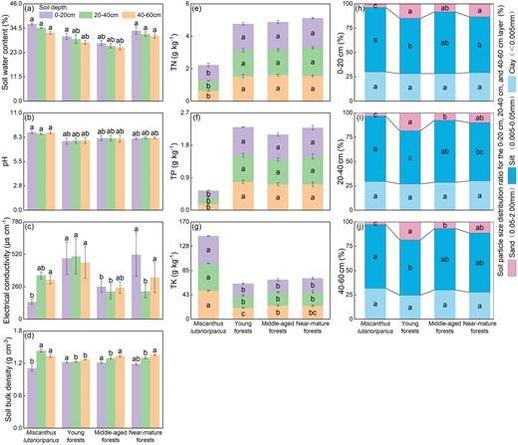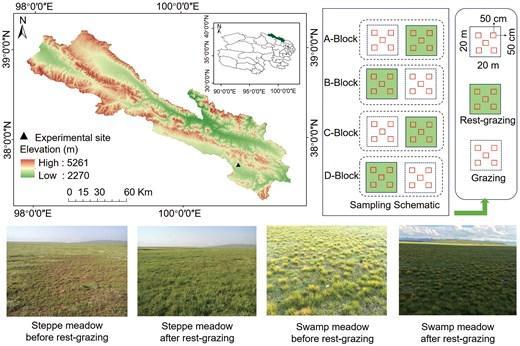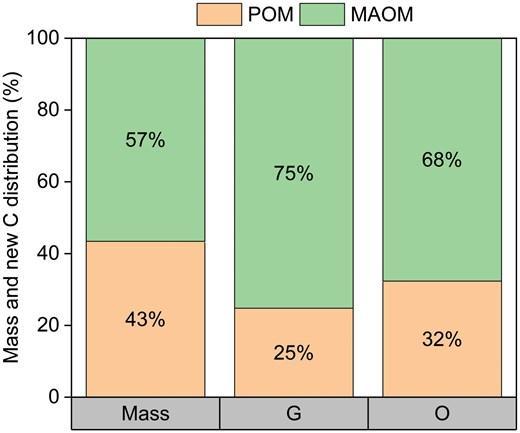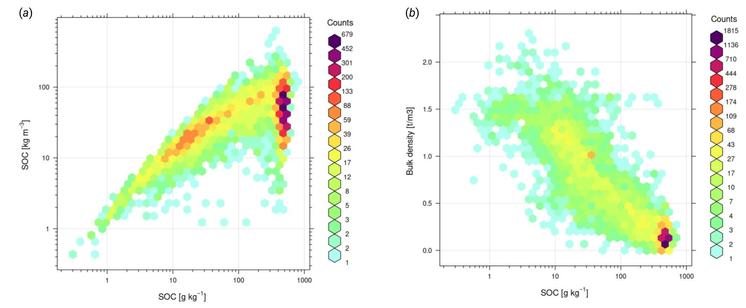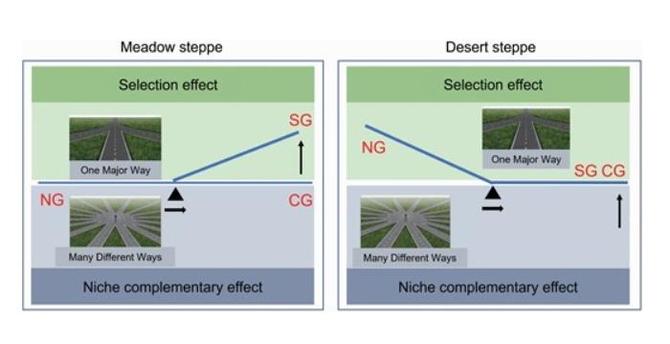#PoplarPlantations ➡️ #BiomassCarbonStock (BCS) & #SoilOrganicCarbon (SOC)
1️⃣ Poplar plantations enhanced both BCS and SOC;
2️⃣ #SoilBulkDensity⬆️, BCS; #SoilSandContent⬆️, SOC⬇️;
https://doi.org/10.1093/jpe/rtaf015
#SoilOrganicCarbon
❇️ #Rest-grazing in spring ➡️ #SoilMicrobialCommunity🟰 Effect❓
Place: #AlpineGrasslands
Results:
1️⃣ Increased #AbovegroundBiomass ➡️ Improved #PlantDiversity;
2️⃣ Increased #SoilOrganicCarbon ➡️ restored #SoilProperties.
https://doi.org/10.1093/jpe/rtae110
#Warming ➡️ #MicrobialNecromass & #SoilOrganicCarbon (SOC)❓
Observation indicators:
1️⃣amino sugar C;
2️⃣particulate organic matter;
3️⃣mineral-associated organic matter
Results:
1️⃣reduced the formation of new SOC;
2️⃣decreased the new microbial necromass in both soil fractions.
https://doi.org/10.1093/jpe/rtaf005
#SoilOrganicCarbon (organic matter / plant and animal residues at various stages of decomposition) is one of the key indicators of hashtag#soilhealth / soil ecosystem services. But how do you measure and report SOC? We advocate that SOC density [kg/m3] is the central variable to monitor SOC dynamics. It is derived by measuring SOC content and Bulk density (separately) and then by a simple formula:
SOC [kg/m3] = SOC [dg/kg]/100 * BD [kg/m3] * (1-CF)
*CF is the coarse fragments fraction (0-1).
Shiwen Ding et al. found that different #LivestockSpecies changed the relationships between #PlantFunctionalDiversity and #SoilOrganicCarbon in the #MeadowSteppe, illuminated the considerable impact of livestock species on the intricate mechanisms of #SoilCarbon sequestration.
Details: https://doi.org/10.1093/jpe/rtae016
On NYE, as I look back at 2024, I want to share three Senate reports, of which I am quite proud. The first is Critical Ground, the major two-year study carried out by the Standing Senate Committee on Agriculture and Forestry - a comprehensive look at soil health in Canada & a call to action to protect our farm soil & native grasslands, not just for food production, but for climate change mitigation. https://sencanada.ca/en/info-page/parl-44-1/agfo-critical-ground/ #SenateofCanada #soil #soilhealth #climatechange #soilorganiccarbon
🌱 Registrations for the Soil Health Now! Conference are now open! 🌱 https://2025.ai4soilhealth.eu/#submit
🌲From April 8-10, 2025, we will be hosting the Soil Health Now conference, alongside workshops and discussion forums at the Wageningen International Conference Center (WICC). 🌿 The event will feature 12+ pan-European "Mission Soil" projects and 11+ distinguished keynote speakers.
🟠 #EO Data for Monitoring #SoilHealth
🟠 #SoilOrganicCarbon (SOC)
🟠 Tech/Tools demonstrations
🟠 Soil Health Indicators
#JustOut Congrat Vira Leng for this 1st PhD #openaccess paper in the EGU SOIL journal 👏! A nice study on 13-year-old trials in 🇰🇭 with cassava, maize🌽or soybean #conservationagriculture #soilorganiccarbon #soilfractions #MAOM #POM
#JustOut #openaccess Towards a modular, multi-ecosystem monitoring, reporting and verification (MRV) framework for #soilorganiccarbon stock change assessment
https://www.tandfonline.com/doi/full/10.1080/17583004.2024.2410812
I am too “old” now, but did participate in 2021 at the #EUSO #EUSoilObservatory Young #Soil Researcher Forum, and it was a lot of fun 👇
Be part of it! --> https://esdac.jrc.ec.europa.eu/euso/2nd-young-soil-researchers-forum
#SoilBiodiversity #SoilErosion #SoilNutrients #SoilScience #SoilOrganicCarbon
Spatial co-variation matters when upscaling environmental samples like soil organic carbon stocks. Geostatistics is under-utilized in most regional estimats. Strong spatial autocorrelation preserves uncertainty in upscaled estimates. By not taking this into account, may estimates report uncertainties that are too small. Properly taking this into account requires large sample sizes. Wadoux and Heuvelink 2023 https://doi.org/10.1111/2041-210X.14106
Finished harvesting #compost, found these #DirtRocks at the bottom. Anyone know enough #SoilScience to be able to identify them? (No biochar added to the compost, but they look to be some kind of #SoilOrganicCarbon aggregate).
To a bystander it looks like brutal treatement yet it's only SOP in science. And the reply is a fun bit of cut-and-thrust concluding with a polite (barbed?) thank-you:
"...we thank Kästner et al. (2024) for raising questions to highlight the most important statements in our review..."
But more importantly, at this juncture it seems we'd best figure this out once and for all, global carbon sink/source/flux/budget being all-inclusive?
#JustOut #openaccess
Mulch application as the overarching factor explaining increase in #soilorganiccarbon stocks under #conservationagriculture in two 8-year-old experiments in Zimbabwe
Down core fits for a microbial and mineral-sorption with transport of #soilOrganicCarbon explains old soils without the need for traditional passive pools. Ahrens etal 2015 https://doi.org/10.1016/j.soilbio.2015.06.008 #ProcessModel #LandCarbon #SciLit
One of those papers where I'm a little ashamed at how long it took me to find/read.
In case you missed it, our new #openaccess study published in Nature Communications about #landusechange #landmanagement and #climatechange effects on #soilorganiccarbon ⬇️
Quantifying The Recarbonization Of Post-Agricultural Landscapes
--
https://doi.org/10.1038/s41467-023-37907-w <-- shared paper
--
#CarbonCycle #ClimateChangeMitigation #RestorationEcology #ecosystem #restoration #security #food #sustainable #agriculture #PAL #GIS #spatial #mapping #spatialanalysis #spatiotemporal #ecosystems #soil #soilhealth #carbonsink #recarbonisation #soilorganiccarbon #foodsecurity #global #carbonstocks #climatechange
#GSB2023 Jennifer Pett-Ridge: what is alive, what is active and what is dead in soil: 50% of #SoilOrganicCarbon is represented by microbial necromass
🐦🔗: https://n.respublicae.eu/Plants_EFSA/status/1635950411122106369
